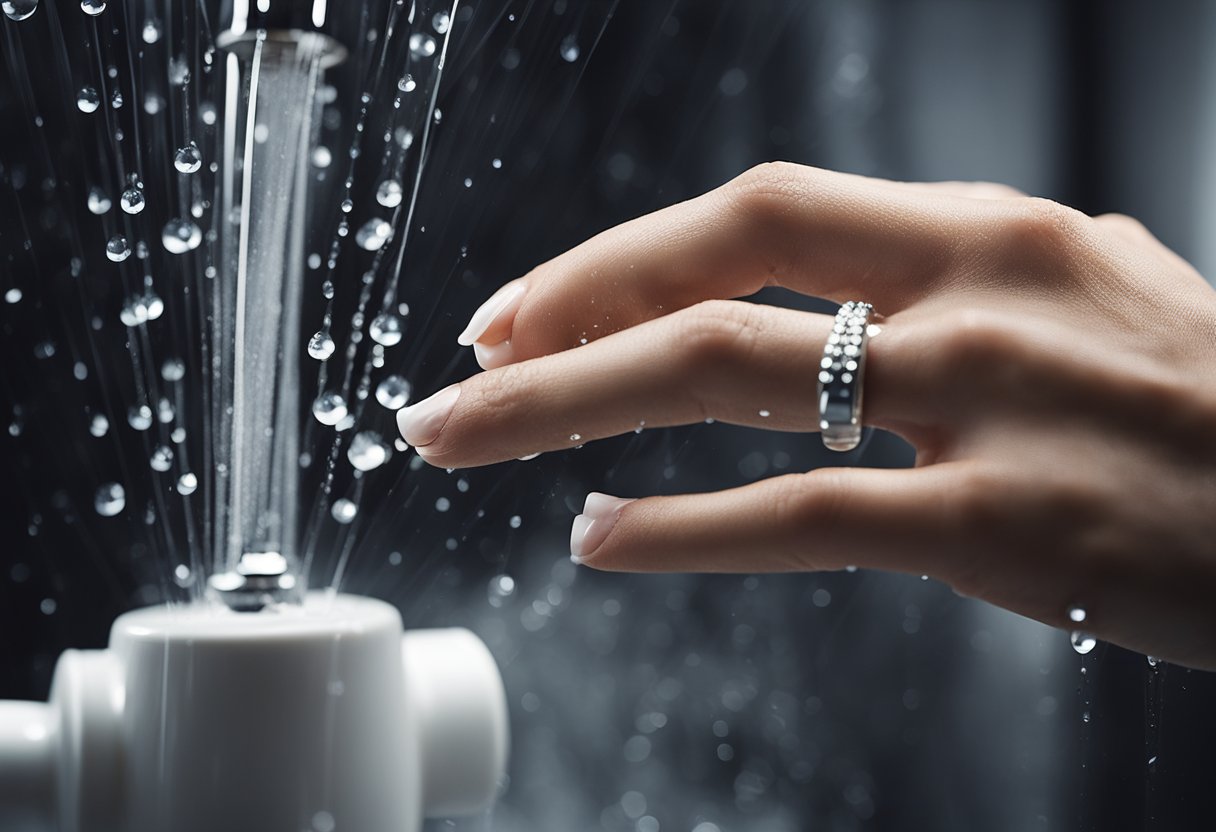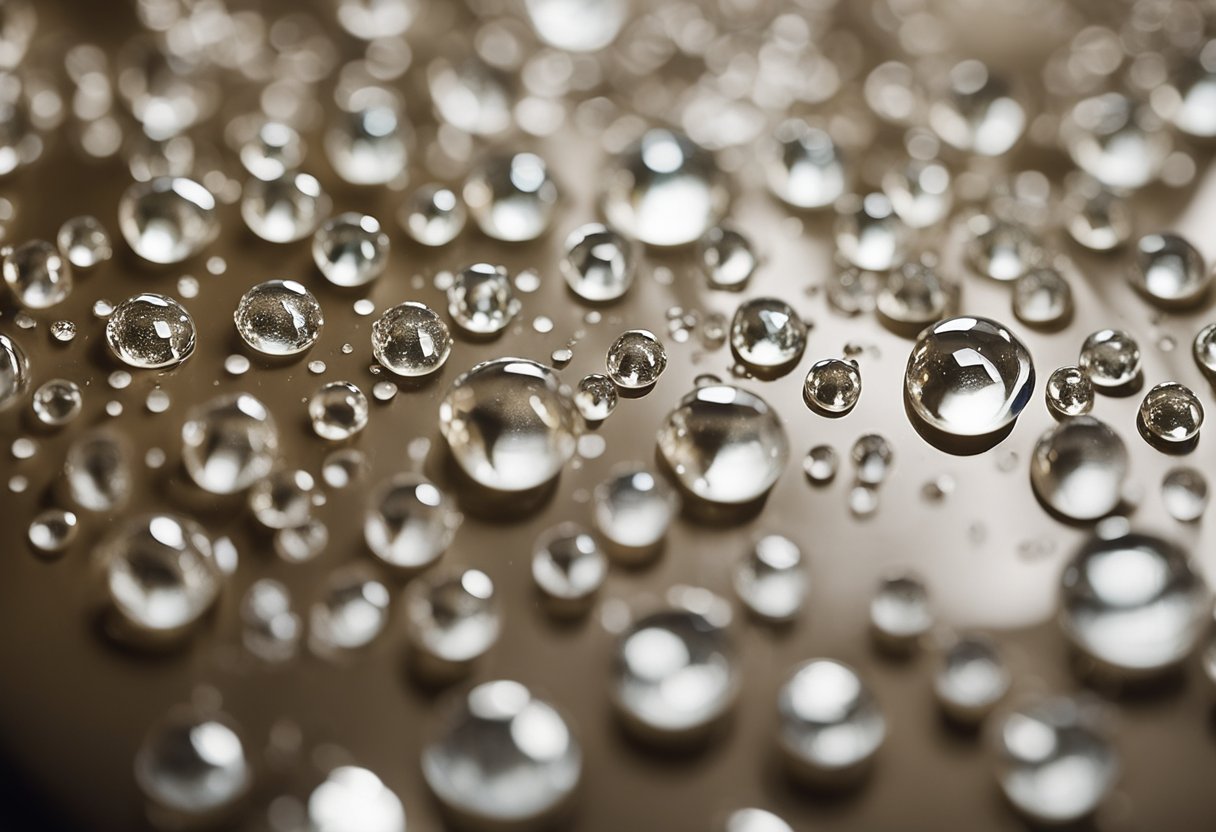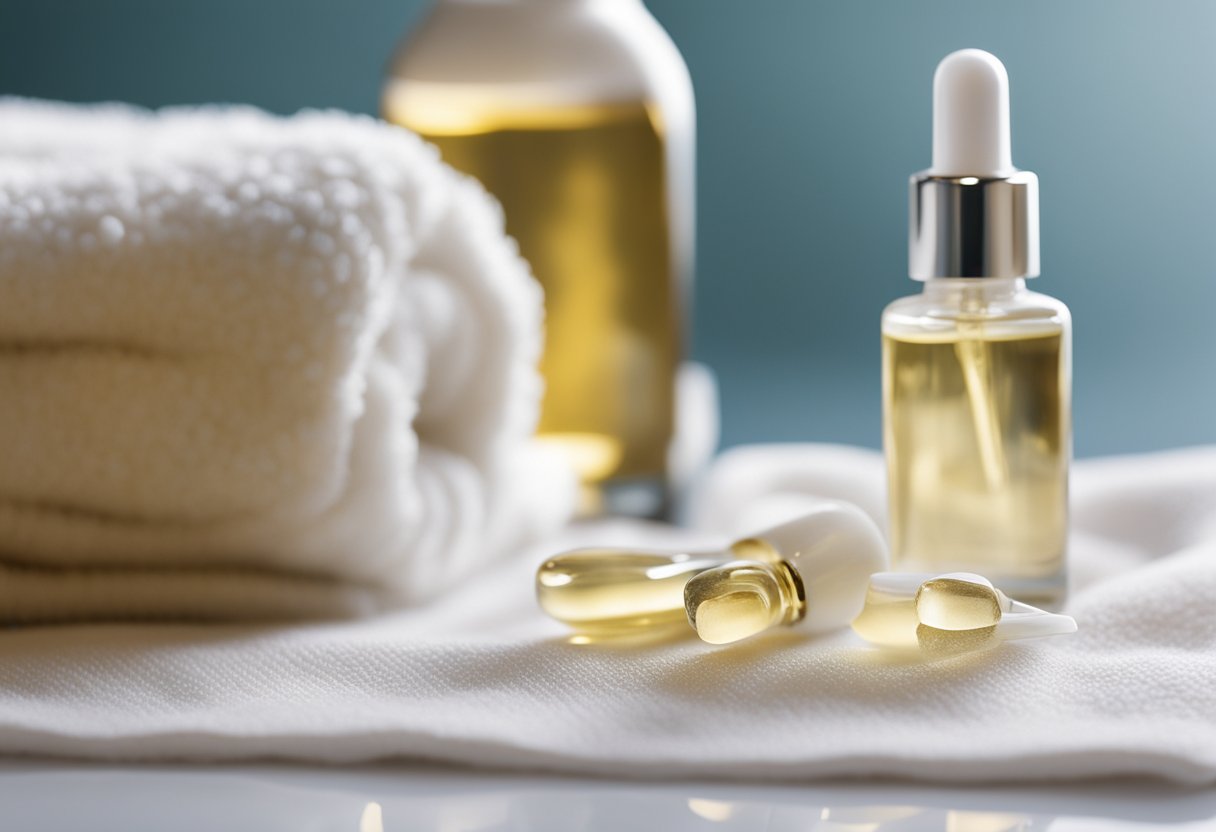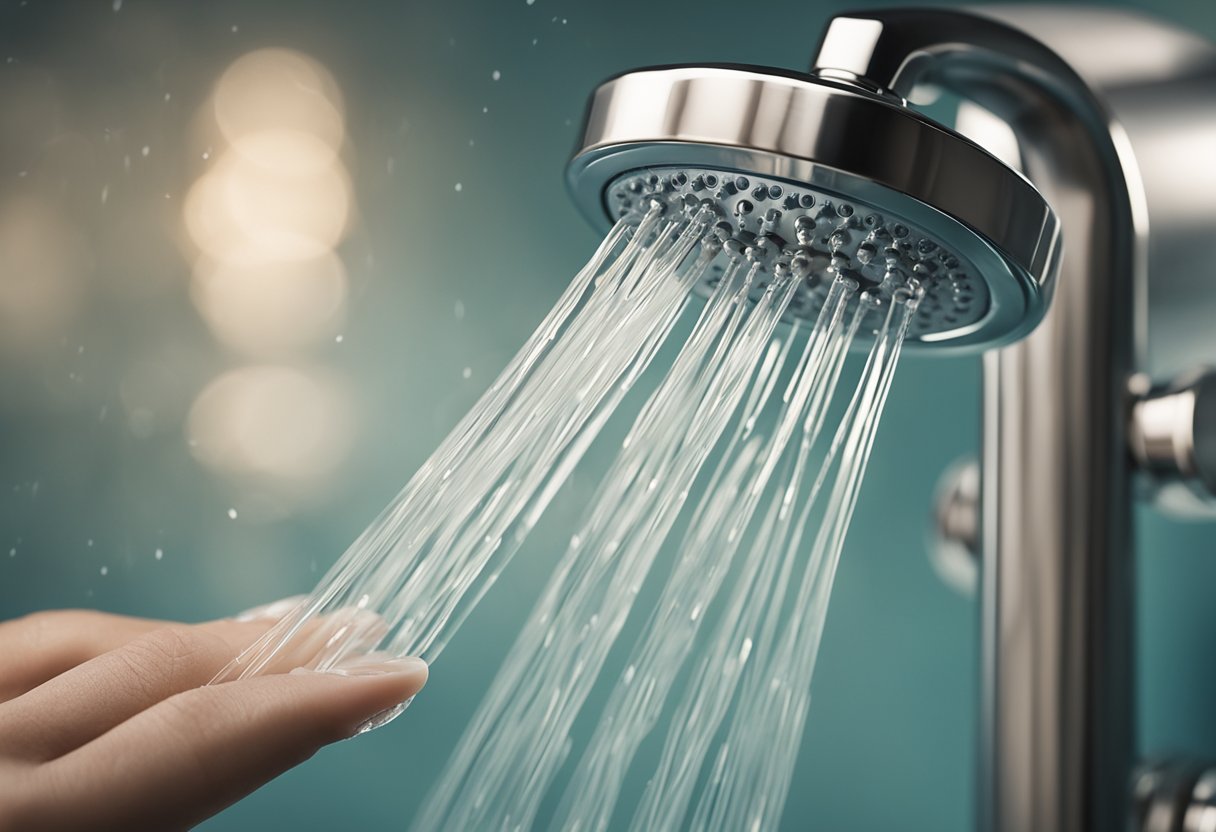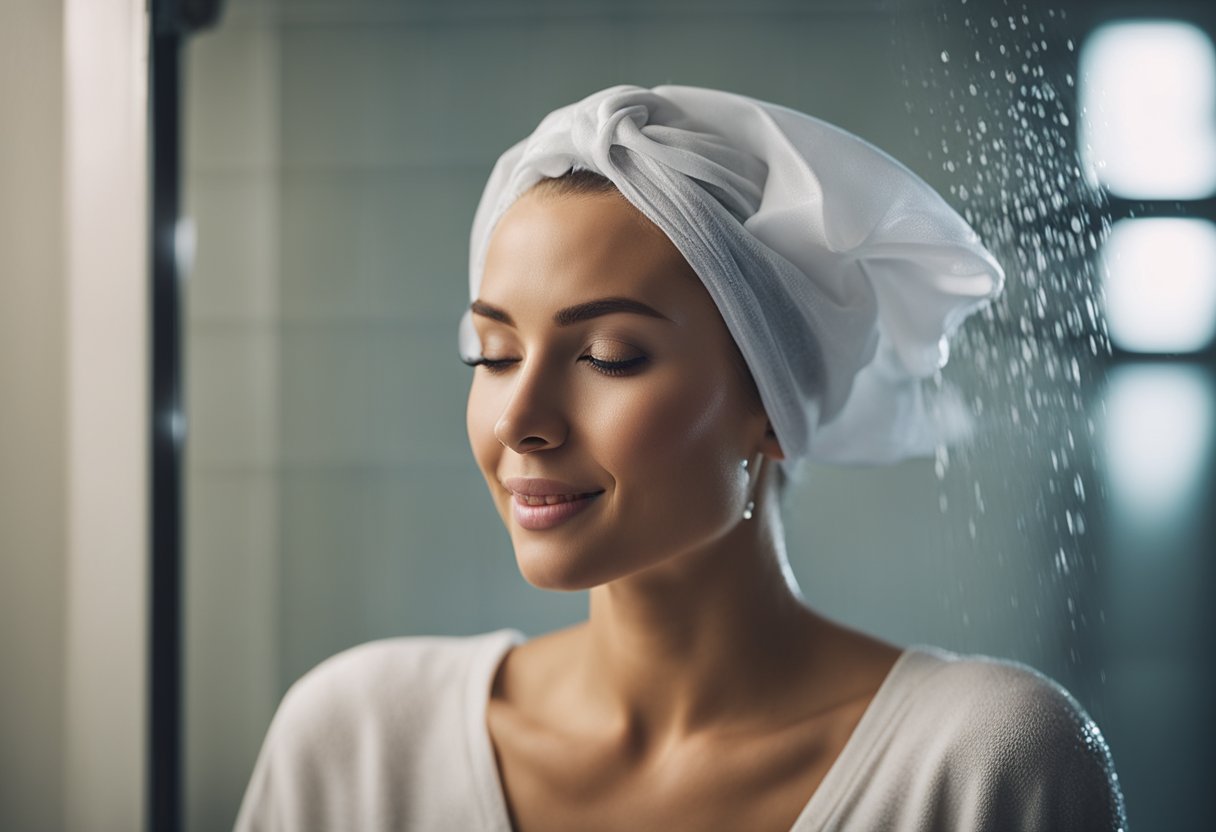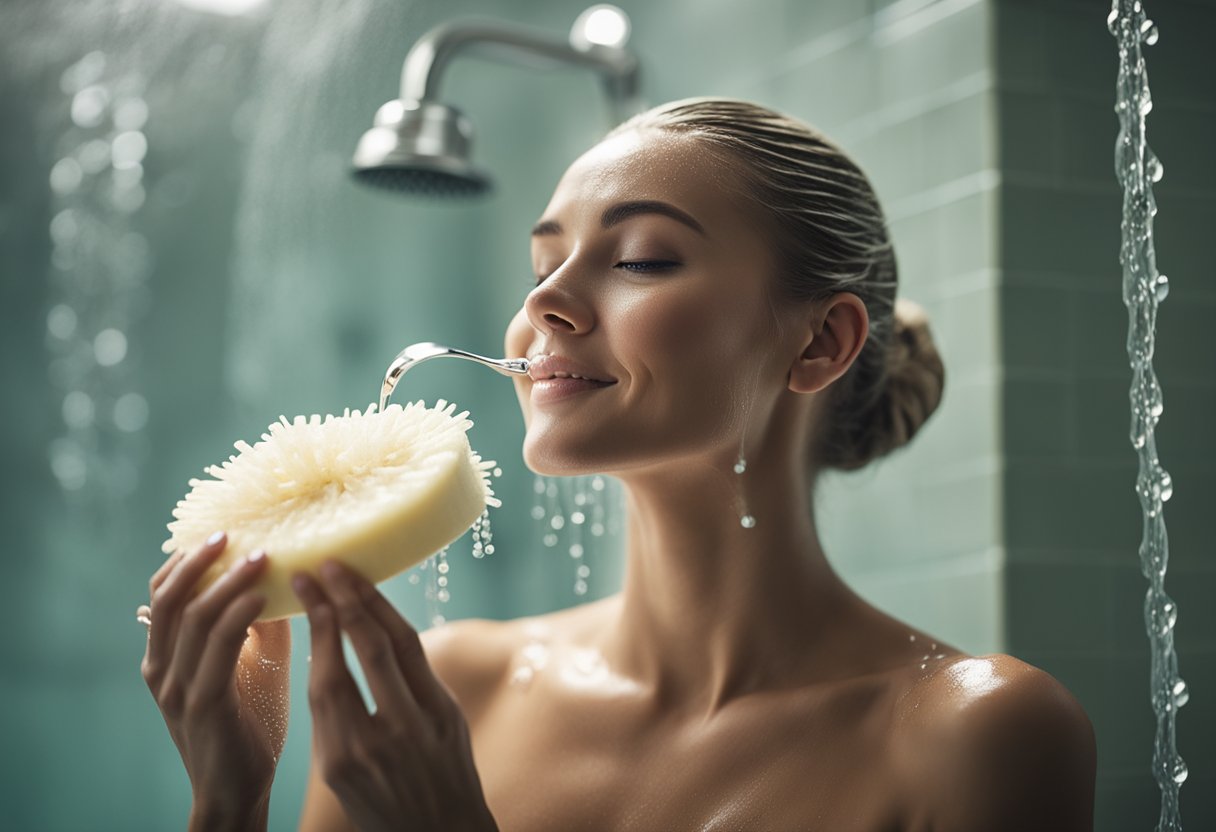As someone who loves the look of acrylic nails, I know firsthand the struggle of maintaining them. One of the most common concerns among acrylic nail enthusiasts is whether it’s safe to shower with them. Fortunately, the answer is yes! However, there are a few things you need to keep in mind to keep your nails looking their best.
Before we dive into how to shower with acrylic nails, let’s first understand what they are. Acrylic nails are artificial nails that are glued onto your natural nails. They are made of a mixture of powder and liquid that hardens when exposed to air. Acrylic nails are popular because they are durable, long-lasting, and can be customized to your liking. However, they do require a bit of extra care to keep them looking good.
Now that we have a basic understanding of acrylic nails, let’s talk about how to shower with them. While it’s safe to shower with acrylic nails, it’s important to take a few precautions to ensure they stay intact. For example, you should avoid direct contact with soap and water, as this can cause your nails to become brittle or loose. Additionally, wearing gloves while washing your hair or body can help protect your nails.
Understanding Acrylic Nails
https://www.youtube.com/watch?v=myjN3N2w5ws&embed=true
As a nail technician, I have seen many clients who are curious about acrylic nails. Acrylic nails are a type of fake nails that are commonly used to enhance the appearance of natural nails. They are made by mixing a liquid and a powder together to form a paste that can be molded into various shapes and sizes. This paste is then applied to the natural nail and allowed to dry. Once dry, the acrylic nail can be shaped and filed to the desired length and shape.
Acrylic nails are a popular choice for people who want to have long, beautiful nails but cannot grow them naturally. They are also a great option for people who have weak or brittle nails that are prone to breaking. Acrylic nails are durable and long-lasting, and they can be customized to fit the individual’s style and preferences.
It is important to note that acrylic nails require maintenance and care to keep them looking their best. Regular manicures are essential to ensure that the nails stay in good condition. It is also important to avoid exposing the nails to harsh chemicals and excessive moisture, as this can cause the acrylic to lift or become damaged.
In summary, acrylic nails are a popular choice for people who want to enhance the appearance of their natural nails. They are durable, long-lasting, and customizable, but they require maintenance and care to keep them looking their best. If you are interested in getting acrylic nails, make sure to consult with a professional nail technician to ensure that you get the best results.
The Impact of Water on Acrylic Nails
As someone who has been wearing acrylic nails for a while now, I know that water can be a major enemy for acrylic nails. Water exposure can cause the glue that holds the acrylic in place to break down over time, which can lead to lifting, chipping, and even infection. Therefore, it is important to take precautions when showering with acrylic nails.
One way to protect your acrylic nails from water exposure is to use a protective glove while showering. This will cover your hand and nails and prevent water from penetrating the acrylic layer. It is also important to keep your nails as dry as possible after every exposure to water. Use a towel to dry your hands and nails thoroughly.
Another way to prevent water from ruining your acrylic nails is to avoid soaking your nails in water for long periods of time. This means keeping your hands out of the water as much as possible while showering. If you need to wash your hair or body, try to keep your hands and nails away from the water stream.
It is also important to use lukewarm water instead of hot water when showering with acrylic nails. Exposing your acrylic nails to warm water can lead to their softening, which in turn weakens their overall structure. Therefore, it is best to choose lukewarm water for your shower.
In summary, water exposure can have a negative impact on acrylic nails. To prevent water from ruining your acrylic nails, use a protective glove while showering, keep your nails as dry as possible, avoid soaking your nails in water, and use lukewarm water instead of hot water. By taking these precautions, you can keep your acrylic nails looking great for longer.
Preparation Before Showering
As someone who regularly wears acrylic nails, I know firsthand the importance of proper preparation before showering. Here are a few tips to help you keep your nails looking great:
Wait for the glue to dry
Before you jump into the shower, make sure that the nail glue has completely dried. This usually takes around 30 minutes to an hour, depending on the type of glue you’re using. If you get your nails wet before the glue has fully dried, the nails may become loose or even fall off.
Wear gloves
One of the best ways to protect your acrylic nails while showering is to wear gloves. You can use rubber gloves or waterproof gloves to keep your nails dry and protected from the water. This will also help prevent the nails from becoming brittle or damaged.
Avoid contact with water and soap
While showering, try to keep your acrylic nails away from direct contact with soap and water. This can cause the nails to become brittle or loose. Instead, use a gentle body wash and avoid scrubbing your hands too hard.
Apply cuticle oil
After showering, apply cuticle oil to your nails to keep them hydrated and healthy. This will also help prevent the nails from becoming dry or brittle. You can use a variety of oils, such as jojoba oil, coconut oil, or almond oil.
By following these simple tips, you can help protect your acrylic nails while showering and keep them looking great.
How to Shower With Acrylic Nails
https://www.youtube.com/watch?v=_euba1n8gEs&embed=true
As someone who has had acrylic nails for quite some time, I know the importance of taking care of them properly. One of the most common questions I get asked is whether or not it is safe to shower with acrylic nails. The answer is yes, you can shower with acrylic nails, but there are a few things you should keep in mind to ensure they stay intact.
First and foremost, it’s important to use lukewarm water when showering with acrylic nails. Exposing your nails to hot water can soften them, which can weaken the overall structure of your nails. So, make sure to adjust the temperature of the water before stepping into the shower.
Another important thing to keep in mind when showering with acrylic nails is to be gentle. Avoid using harsh scrubs or loofahs, as they can damage your nails and cause them to lift or break. Instead, opt for a gentle soap or body wash that won’t dry out your skin or nails.
If you have hard water, it might be worth investing in a shower filter. Hard water can cause buildup on your nails, which can make them look dull and discolored. A shower filter can help remove impurities from the water, leaving your nails looking clean and shiny.
In conclusion, showering with acrylic nails is safe as long as you take the necessary precautions. Use lukewarm water, be gentle, choose a gentle soap, and consider investing in a shower filter if you have hard water. By following these tips, you can ensure that your acrylic nails stay intact and looking great.
Post-Shower Care for Acrylic Nails
After showering with acrylic nails, it is important to take proper care of them to keep them intact and looking great. Here are some tips for post-shower care for acrylic nails:
1. Dry Your Nails Thoroughly
Make sure to dry your nails thoroughly after showering. Moisture can cause your nails to lift and become damaged. Use a soft towel to gently pat your nails dry.
2. Moisturize Your Hands and Cuticles
Acrylic nails can be drying to your hands and cuticles. To prevent this, apply a hand lotion or cuticle oil after showering. This will help keep your hands and nails hydrated.
3. Avoid Alcohol-Based Hand Sanitizer
Alcohol-based hand sanitizer can be harsh on acrylic nails. Instead, use a gentle hand soap to clean your hands after showering.
4. Be Careful with Nail Polish Remover
When removing nail polish, be careful not to get any on your acrylic nails. Nail polish remover can cause acrylic nails to lift and become damaged.
5. Avoid Excessive Heat
Excessive heat can cause acrylic nails to lift and become damaged. Avoid using hot tools like hair dryers and curling irons on your nails.
By following these tips, you can keep your acrylic nails looking great and avoid damage after showering.
Common Mistakes to Avoid
https://www.youtube.com/watch?v=uIk_xqaccgA&embed=true
As someone who has been wearing acrylic nails for years, I have learned through trial and error what mistakes to avoid when showering with them. Here are some common mistakes that can lead to lifting, breakage, and cracking of acrylic nails:
-
Soaking nails in water for too long: Acrylic nails and water do not mix well. Soaking your nails in water for an extended period can cause the glue that holds the acrylic in place to break down over time. To avoid this, try to keep your nails as dry as possible while showering. You can use a protective glove that covers your hand and nails or simply keep your hands out of the water as much as possible.
-
Using hot water: Hot water can weaken the bond between the acrylic and your natural nail, which can cause lifting and breakage. It’s best to use lukewarm or cool water when showering with acrylic nails.
-
Using harsh soaps: Harsh soaps can dry out your skin and nails, which can cause the acrylic to lift and crack. It’s best to use a mild soap or body wash that is gentle on your skin and nails.
-
Scrubbing nails too hard: Scrubbing your nails too hard can cause the acrylic to lift and break. It’s best to use a soft sponge or cloth to clean your nails gently.
-
Not drying nails thoroughly: Moisture is the enemy of acrylic nails. Not drying your nails thoroughly after showering can cause the acrylic to lift and crack. It’s best to use a soft towel to dry your nails gently and thoroughly.
By avoiding these common mistakes, you can keep your acrylic nails looking great and avoid the hassle of having to get them fixed or replaced.
Potential Risks and How to Mitigate Them
As someone who regularly wears acrylic nails, I know how important it is to be careful when showering. There are several potential risks that you should be aware of, but with a few simple precautions, you can mitigate them.
Nail Infection
One of the biggest risks of showering with acrylic nails is the possibility of developing a nail infection. This can happen if water gets trapped between the acrylic nail and your natural nail, creating a moist environment where bacteria and fungus can grow.
To avoid this, make sure your nails are completely dry before getting in the shower. You can also try using a waterproof bandage to cover your nails during your shower.
Bacteria and Fungus
Even if you take precautions to avoid nail infections, there is still a risk of bacteria and fungus growing on your acrylic nails. This can happen if you don’t clean your nails properly or if you expose them to moist environments.
To mitigate this risk, make sure you clean your nails thoroughly before and after your shower. You can use a soft-bristled brush and gentle soap to scrub under your nails and remove any dirt or debris. You can also try using an antifungal nail spray or cream to help prevent the growth of bacteria and fungus.
Harsh Chemicals
Another risk of showering with acrylic nails is exposure to harsh chemicals. Many shampoos, conditioners, and body washes contain chemicals that can weaken or damage your acrylic nails over time.
To avoid this, try using gentle, natural products that are free from harsh chemicals. You can also try wearing gloves during your shower to protect your nails from exposure to these chemicals.
Water Damage
Finally, showering with acrylic nails can also lead to water damage. This can happen if your nails are exposed to water for too long, causing them to become soft and weak.
To avoid this, try to keep your shower time short and avoid soaking your nails in water for too long. You can also try using a waterproof nail polish or sealant to help protect your nails from water damage.
By taking these simple precautions, you can enjoy your shower without worrying about damaging your acrylic nails.
Alternative Nail Options
While acrylic nails are a popular option for people who want to enhance the look of their nails, they are not the only option available. In fact, there are several alternatives that can give you the same look as acrylic nails without the potential damage to your natural nails.
One alternative option is natural nails. If you want to avoid the potential damage to your natural nails caused by acrylics, you can opt to keep your natural nails long and shaped. You can also apply a clear polish to give them a glossy finish. While natural nails may not be as durable as acrylics, they are a healthier option for your nails.
Another option is gel nails. Gel nails are similar to acrylic nails in that they are applied over your natural nails, but they are made of a different material. Gel nails are made of a gel substance that is cured under a UV light. They are more flexible than acrylic nails and can be more comfortable to wear. Gel nails are also less damaging to your natural nails than acrylics.
When considering alternative nail options, it is important to do your research and choose a reputable salon or nail technician. Make sure that they use high-quality products and follow proper hygiene practices to ensure that your nails are healthy and safe.
In conclusion, while acrylic nails are a popular option for people who want to enhance the look of their nails, there are several alternative options available. Natural nails and gel nails are both healthier options for your nails and can give you the same look as acrylics without the potential damage.
Frequently Asked Questions
How long do acrylic nails last?
Acrylic nails typically last for 2-3 weeks before needing a fill or removal. However, the longevity of acrylic nails depends on how well they are maintained and how quickly your natural nails grow.
Can you go swimming with acrylic nails?
Swimming with acrylic nails is not recommended as it can weaken the bond between the acrylic and natural nail, causing the nails to lift or break. It is best to avoid prolonged exposure to water and wear gloves if necessary.
How do I protect my nails in the shower?
To protect your acrylic nails in the shower, avoid exposing them to direct contact with soap and water. Wear gloves to cover your nails while washing your hair or body. Opt for lukewarm water instead of hot water to prevent the acrylic from softening and weakening.
How to clean fake nails from glue?
To remove glue from fake nails, soak them in warm soapy water for a few minutes. Gently peel off the fake nails and use a soft-bristled brush to remove any remaining glue residue. Avoid using harsh chemicals or tools that can damage the natural nail.
How to clean Acrylic Nails on top?
To clean the top of acrylic nails, use a soft-bristled brush and a non-acetone nail polish remover. Gently scrub the top of the nails to remove any dirt or debris. Avoid using acetone or harsh chemicals that can damage the acrylic.
How long after fake nails can I shower?
It is recommended to wait at least 2 hours after getting fake nails before showering. This allows the glue to fully dry and the nails to set. It is also important to avoid hot water and direct contact with soap to prevent damage to the nails.

Hi, I’m Sal Muller of Tooltrip.com. My DIY experience led me to understand essential power tools for home projects. Tooltrip.com guides enthusiasts and professionals in choosing right tools for any job. I provide concise top tool reviews for easier, efficient DIY.

